Why You should Observe at Fremont Peak
The Fremont Peak Observatory operated by the Association is located in Fremont Peak State Park near San Juan Bautista CA.
Amateur Astronomers have been visiting Fremont Peak since the 1960's to enjoy the dark skies. The Fremont Peak Observatory was built using private funds with the cooperation of the State Park at the site where many astronomers set up. It continues to be one of the premier sites near the bay area. Even with the growth in the last 40 years Fremont Peak remains one of the closest dark-sky sites available.
Clear and Dark Skies
The particular location and circumstances of Fremont Peak allow it to have better skies than the Bortle rating would imply.
- At 2800 feet elevation, there is 10% less atmospheric absorption than at sea level. This makes a big difference for faint objects.
- The prevailing winds are from the west. Having blown over thousands of miles of flat ocean before arriving at the Peak, the air flow is very laminar. The lower atmospheric turbulence makes astronomical images more crisp and clear.
- Cold water upwelling along the Pacific coast cools the lower layers of air, making the air mass more stable and further reducing turbulence.
- The coastal air contains fewer particulates and aerosols, reducing haziness.
- The peak is about 2000 feet higher than nearby cities.
- The light pollution that does exist tends to be in the "least interesting" parts of the sky. Hills block direct view of Salinas and Hollister. Gilroy is easily avoided by either trees, the observatory, or just the property layout.
- From May until September, advection fog frequently fills the valleys around the peak, extinguishing the light from Salinas and Gilroy, sometimes reaching as far as Hollister.
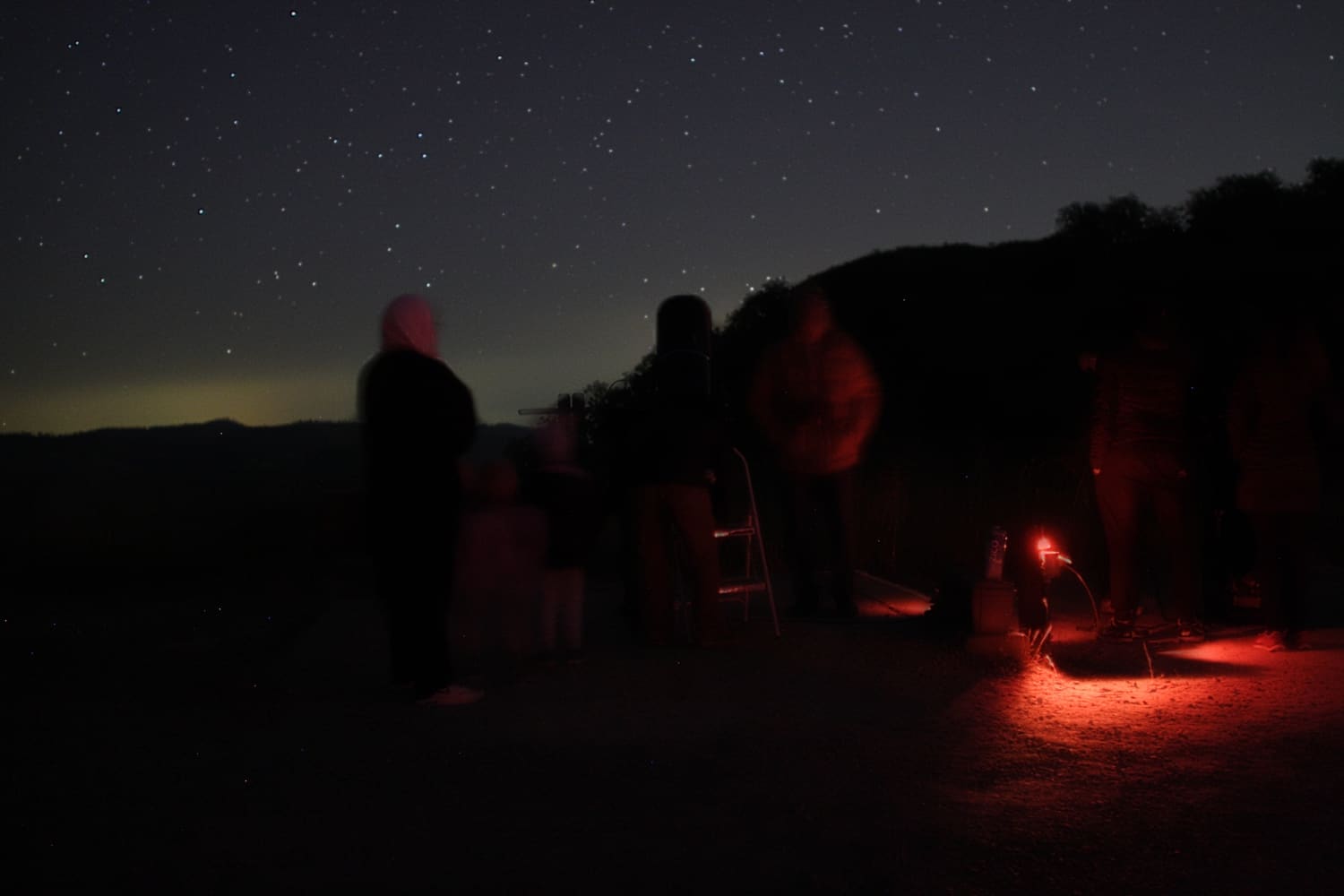
Close proximity
As the cities in the Bay Area have grown it has become more difficult to find a place that is both close and still dark.
Fremont Peak is just such a place. About 90 minutes from San Jose, Santa Cruz, or Monterey, it remains a close dark site. Unlike some alternatives such as San Luis, Fremont Peak is usable all year. Summer fog usually works in our favor.
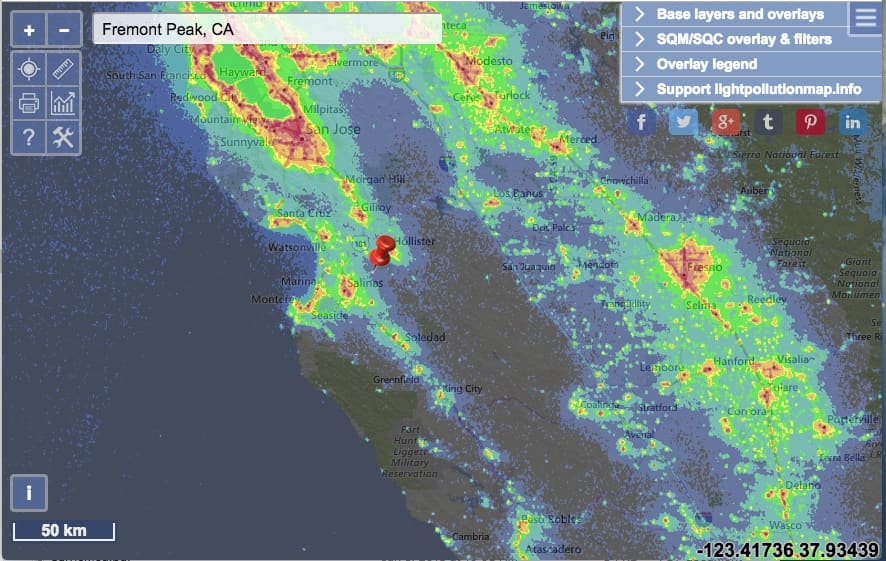
Access Controlled
Access to the observatory area is controlled, allowing illumination by headlights and streetlights to be managed. Light sources such as these can instantly ruin people's dark adaptation, which can take half an hour to recover. They can also ruin sensitive astronomical measurements and images.
The portion of the park managed by FPOA is closed at all times to general vehicle traffic. By becoming an Observer member of FPOA you can request the current gate combination and drive your car directly to where you set up your scope.
On program nights the telescope pads by the observatory building are reserved for scopes supporting the public program. Private scopes can set up by the restrooms. Visitors will be passing by you, but the number greatly decreases after 10 PM (earlier in the spring and fall).
On other nights, once you set up there are few lights to distract you. Most of these are transient (e.g. late night hikers on the peak 1/2 mile away). You will be left alone to observe, with the exception of other observers or guests accompanying you.
While FPOA programs only run from mid-March thru October, the area is open for observing all year. Winter offers some of the best skies, but also potentially icy roads.
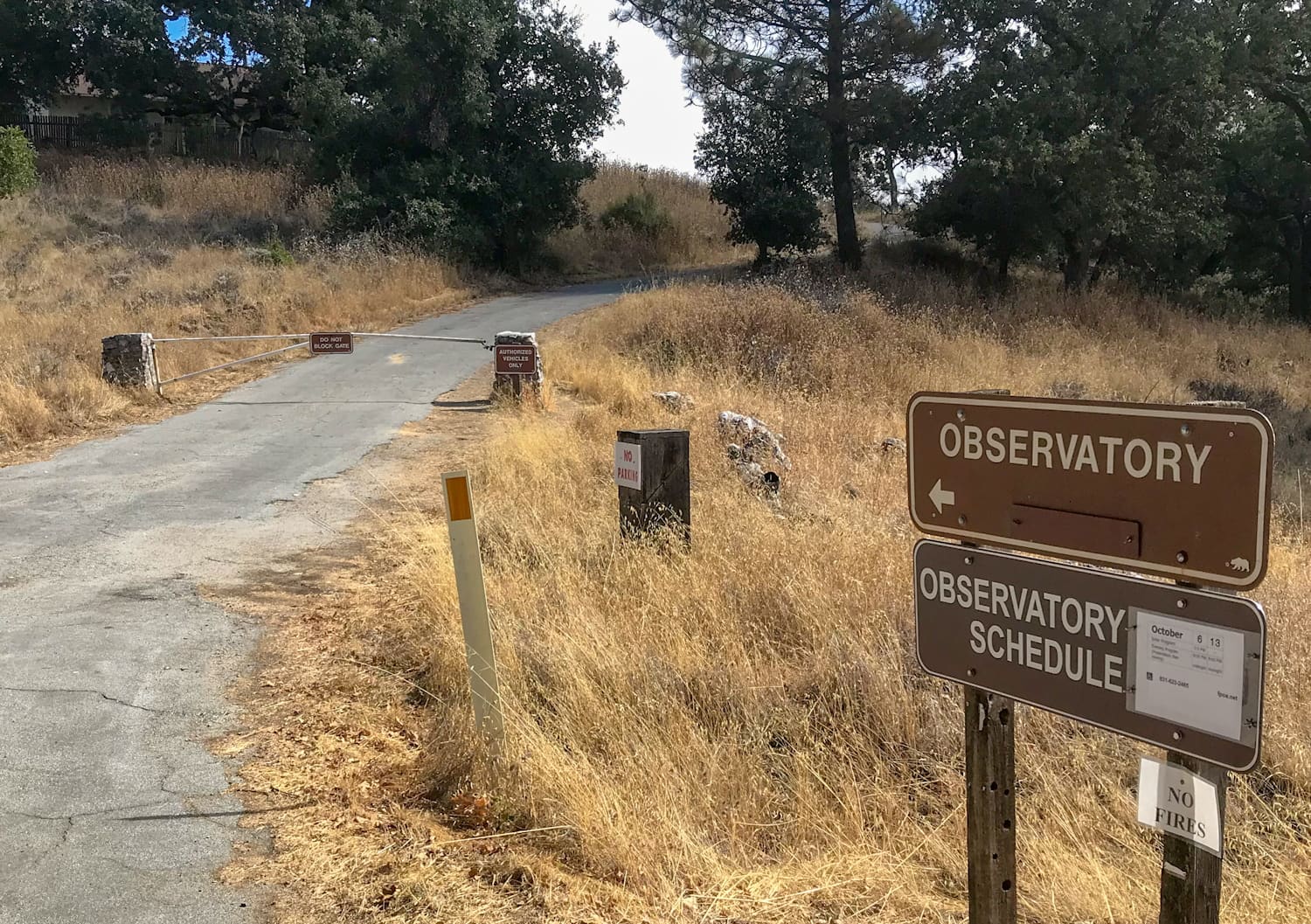
Amenities
One of the nice things about the peak is how friendly it is to set
up here. Astronomers use one of two observing areas either
next to the rest rooms or up a small hill at the pads.
Standard electrical outlets (120 V ac) are available in both areas.
Water is available in both areas.
And, with the proper training and public program service, the 30-inch Challenger Telescope becomes available to you. That instrument makes dim objects like M101 appear almost like photographs.
Astronomy is done late at night, so people are often sleepy after observing. While camping is not permitted in the FPOA area, the park does offer campsites that can potentially let you drive home rested in the daytime, after a good night's sleep. Whether you are camping or just parking, all FPOA members are reminded to pay the state park entrance fee.
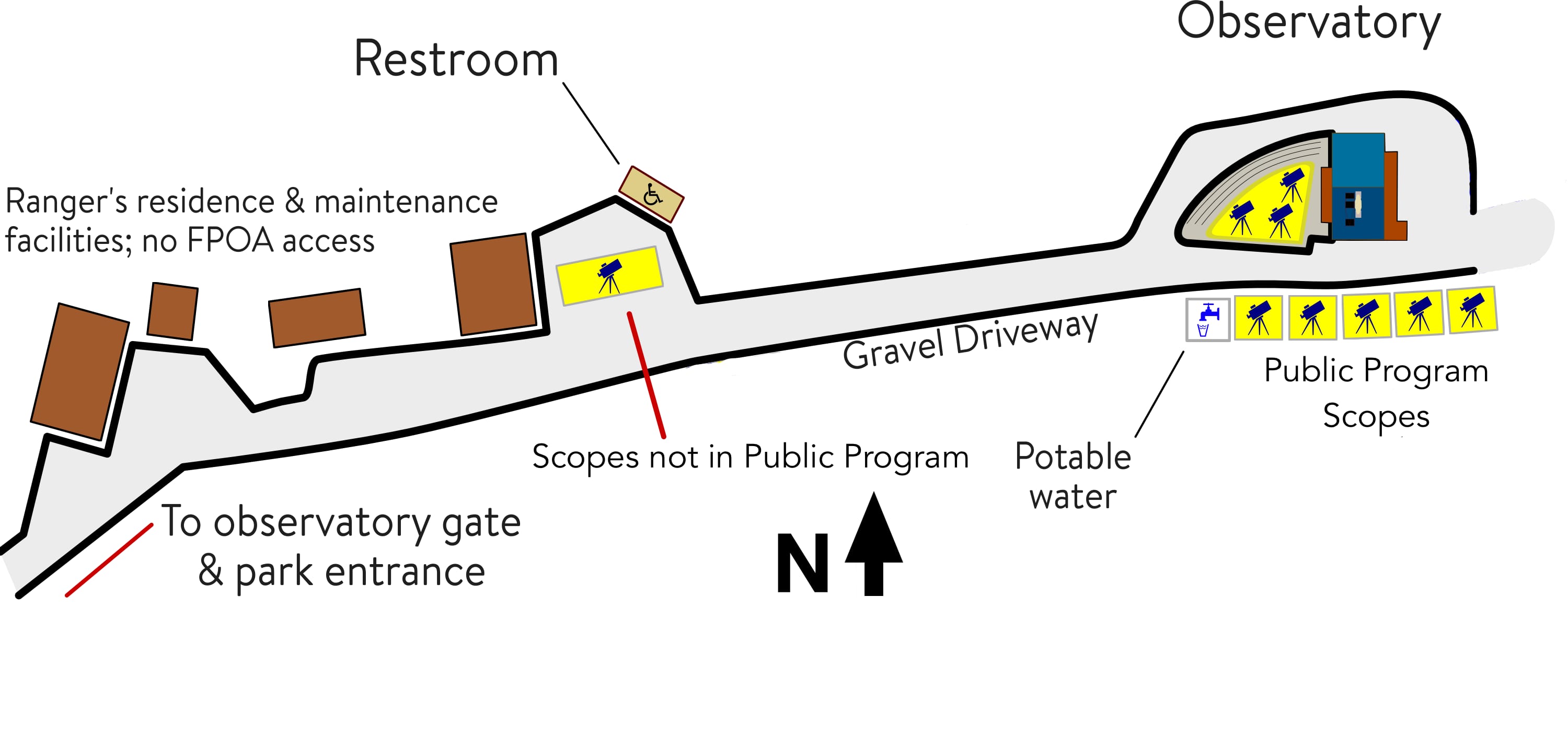
Join now
The Fremont Peak Observatory Association is a volunteer-driven nonprofit, devoted to interpreting astronomy to the public. We rely on your support to continue our educational programs.
Now is a great time to Join or renew your FPOA membership.
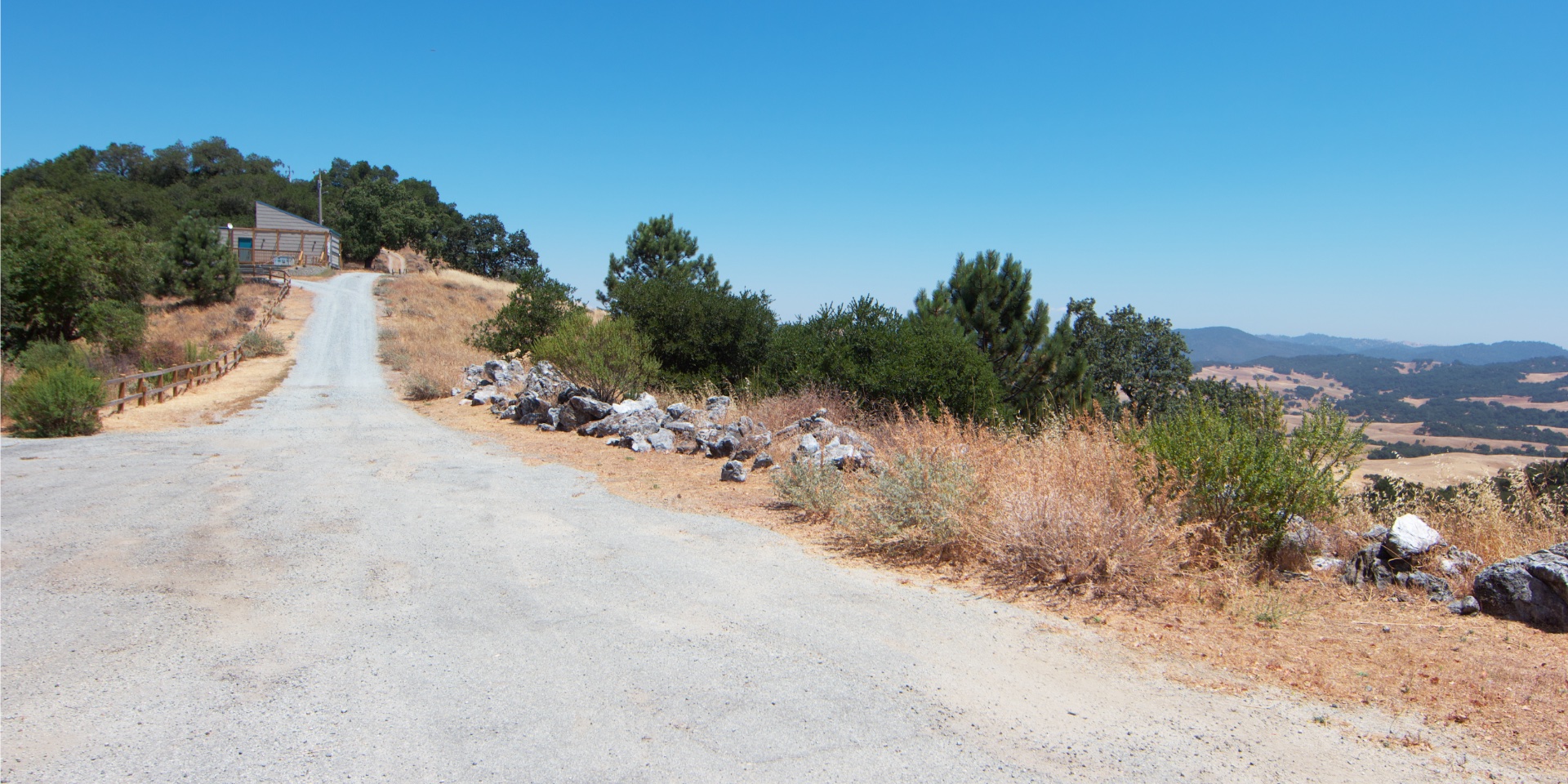
Restrooms observing area

